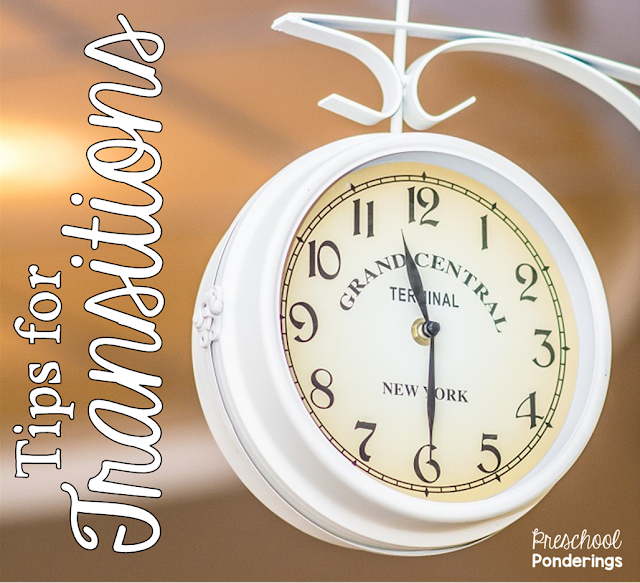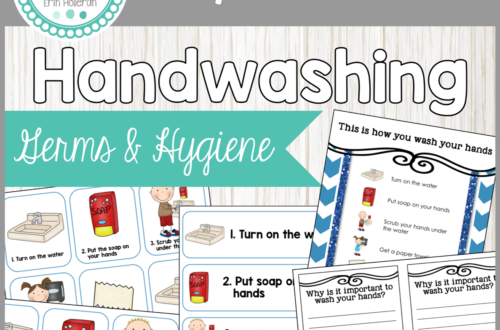I’ve been all about routines this week, probably because I’ve been super-conscious of my own personal routines for whatever reason. I can’t talk about routines in the preschool room without devoting some time to transitions.
Transitions, that’s one of those buzz words that we use a lot in early childhood. Do you ever stop and really think about that word? To transition means to change from one thing to the next, when we use the word transition in the context of early childhood education we are usually talking about helping children move from one activity to the next.
Some transitions are very natural, like singing a clean up song when it is time to put materials away, other transitions aren’t quite as smooth (the transition from lunch to nap is never one of my favorites!). Every transition does not need a song attached to it, you’d surely be singing all day long, but there are some things that you can do to help children move from one activity to the next just a little more easily.
Take a minute to think about the transitions that help you throughout your day, here are some of the strategies that I use:
- I hit snooze twice every morning before getting out of bed
- I make my coffee right before I leave so that I can take it with me in the car
- When I get to work I go over my to do list for the day
Right there are three strategies; hitting that snooze button gives me a couple of warnings before I really have to get out of bed, taking my coffee with me gives me something to look forward to and makes my drive a little more enjoyable, and going over my to do list helps me know what’s coming up next.
These are all great ideas for helping children transition throughout the day too. You can easily give warnings letting them know that they have ten more minutes, and then five more minutes to work on the current activity. You can turn something that is usually a dreaded part of the day – like nap time – into something special by giving the children a reason to look forward to it. Maybe they get to listen to a special CD or you have a special night light that is only for nap time. Letting the children know what is happening each day helps prepare them for those events, especially if the day is not going to follow the usual routine.
Transitions don’t have to be complicated or particularly involved, and they shouldn’t be one more thing that you have to add to your day. Transitions should help everyone get through the day smoothly, while alleviating stressful situations. I challenge you to think about all of the transitions that you use throughout the day and incorporate some of those same strategies into your classroom transitions. Creative reflection always leads to innovation!



